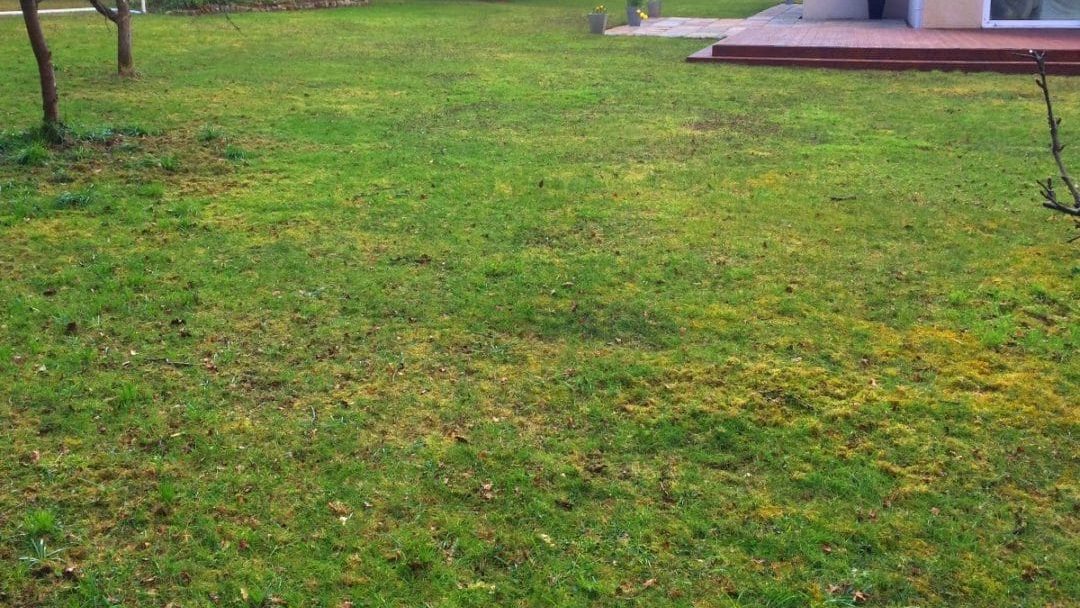I often get calls regarding moss growing in lawns. Moss is a small green plant with finely branched stems and tiny leaves. It produces spores that are spread by the wind. Moss forms a thick, green matt on the soil surface, however is not the culprit for killing grass in those areas.
When moss is found in lawns, it’s an indication that conditions are not favorable for growing grass and the moss is simply filling in the spaces where the grass is not growing well. You can attempt to remove or kill the moss, but unless you determine what the underlying problem is and make improvements in the conditions to promote healthy grass growth, then the moss will continue to thrive in those areas. There are several conditions that could be encouraging the moss to grow including: too much shade, acidic soil, poor drainage/wet soils, compacted soil, and low soil fertility.
Below is a description of each problem that can contribute to moss growth in the lawn and how to change it:
- Too much shade: Moss can tolerate shade better than grass. There are several options for dealing with shady areas in the lawn. You can plant more shade-tolerant grasses, like St. Augustinegrass, but keep in mind that a deeply shaded area (less than 4 hours of full sun per day) is too shady for any type of grass to grow. If the area is too heavily shaded, you may have to decide which you would prefer, the trees/shrubs or the lawn. If you choose to keep the trees/shrubs you can cover the area under the trees with a 3-inch layer of mulch. Avoid piling mulch at the base of the plants. If the area is lightly shaded, you can mow the grass in the area on the high end of the recommended mowing height to encourage deep rooting and allow maximum leaf coverage to intercept as much sunlight as possible for making food. Occasionally, some people decide to let the moss grow in the shady area since it makes a good groundcover that requires little water, no fertilizer, and will stay green year round.
- Acidic soil: Moss thrives well in acidic soils. If the soil pH is below the range recommended for grasses, this would encourage moss growth instead. To determine what the soil pH is in an area, you can collect and submit a soil test sample. Soil testing boxes and forms along with information on collecting a soil sample can be obtained at your local North Carolina Cooperative Extension center. Most grasses prefer a soil pH of 6 to 6.5, except centipede grass, which prefers a soil pH of 5.5. If the results indicate that the soil pH is too low in the area moss is growing, you can raise the pH by applying lime.
- Low soil fertility: A soil test will be important in determining if an area where moss is growing is low in nutrients or not. Moss thrives in unfertile soils where grass does not do as well. Along with a soil test to see if the area is lacking in a nutrient, fertilizing your lawn with the correct amount of fertilizer at the proper time will encourage a healthy lawn.
- Poor drainage/wet soils: Moss grows well in wet soils. If the moss is growing in a low-lying area where the soil stays wet, improving the drainage can discourage moss from growing. Avoid watering on an automatic or regular schedule. This can encourage excess moisture and wet soils. Water your lawn only when you need to. When it shows signs of stress like a dull, bluish-gray cast or when footprints remain after walking through the lawn, it is time to water. Properly watering a lawn is to water infrequently but deeply to encourage deep root growth, which will tolerate drought stress better than a shallow root system.
- Compacted soils: A lawn does not grow well in compacted soils because of the lack of air, water, and nutrients moving through the soil to the roots. Soil compaction also prevents good drainage allowing a favorable spot for moss to grow instead of grass. Soil compaction can be alleviated by aerification. Aeration is the removal of cores of soil from the lawn. Many landscape/lawn businesses can aerate a lawn or aerators can be rented at many places.
Over time, moss growth can be corrected by evaluating the area where it grows and determining what factors might be preventing a healthy lawn and encouraging the moss. Correcting the problems can reduce and eliminate moss from areas in the lawn.
Source / NC State University

